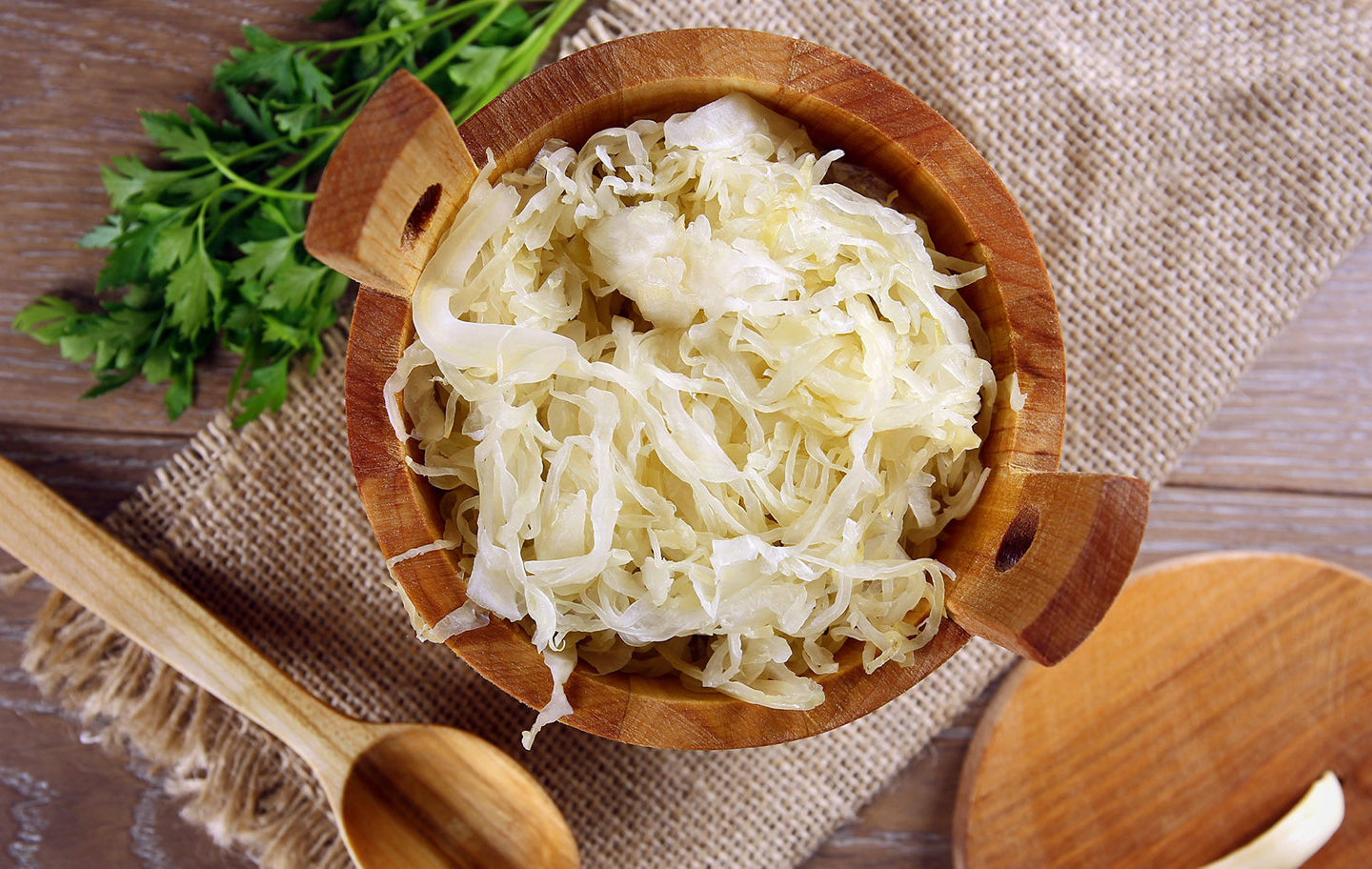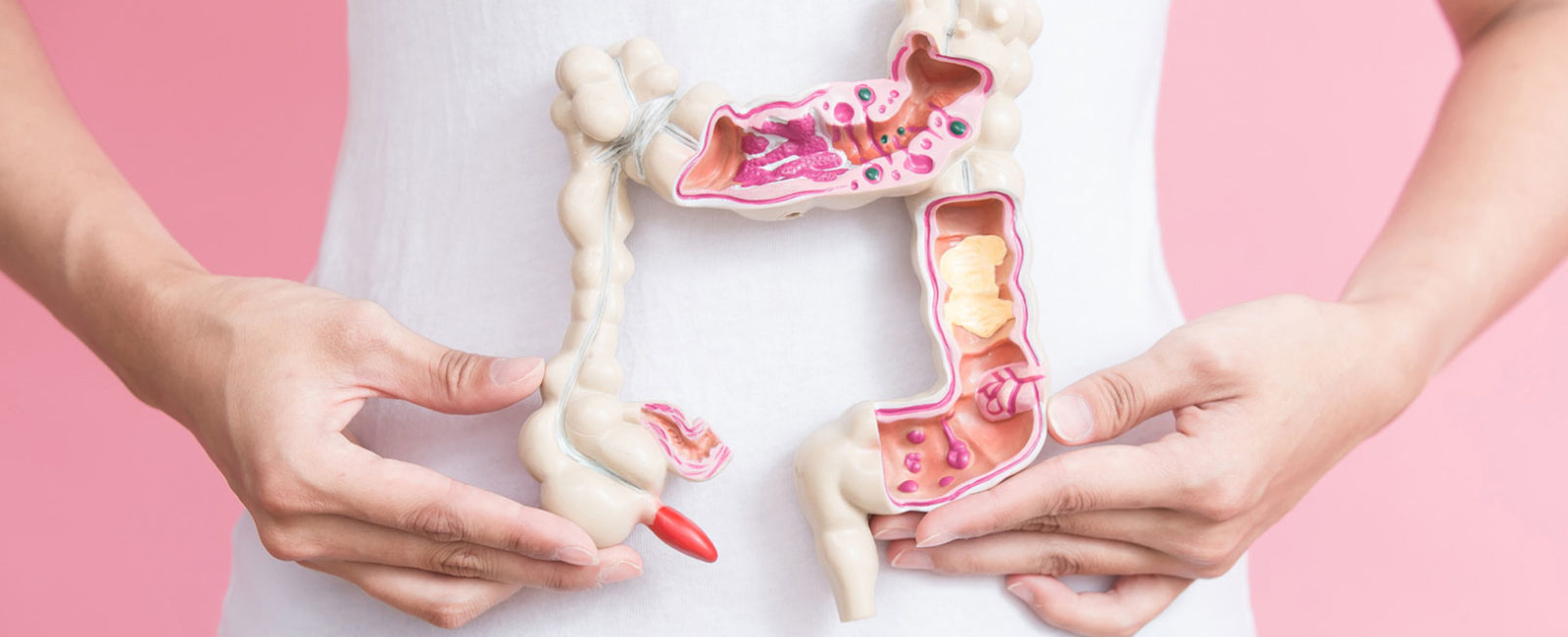What is water kefir? The kefir crystals (also called Japanese crystals, Japanese seaweed, tibicos or Himalayan crystal algae) are small, [...]

Sauerkraut for digestion: How to make the natural probiotic yourself
Mmmmm… Sauerkraut! It tastes delicious, whether cold or warm, pure or as a side dish. With sauerkraut you not only delight your palate, but also your intestines, because sauerkraut contains valuable probiotics. These are living bacteria and fungi that do a lot of good for your intestines. If they are present in sufficient quantities, your intestinal flora is in balance and your immune system is full of power. Sauerkraut is good for your gut, it contains many valuable probiotics, namely lactic acid bacteria. However, you can only find these in fresh sauerkraut from the health food store or the weekly market. Sauerkraut from the supermarket is strongly heated in order to keep it as long as possible. However, the heat means death for the valuable lactic acid bacteria. With the right tools and a little patience, you can easily make yourself a healthy, delicious sauerkraut.
How the valuable lactic acid bacteria are created
The process is called fermentation or fermentation process. The bacteria multiply all by themselves. Thousands of years ago, people used this method to preserve their vegetables longer. In fact, it is believed that the first sauerkraut was produced by the Chinese. Crazy, right? After all, sauerkraut is known all over the world today as a typical German dish. It’s not for nothing that the Germans are called the “Krauts”.
The base of sauerkraut is very finely chopped white cabbage mixed with salt. By nature, cabbage carries a number of bacteria. In order for them to do their job, the cabbage must be put under a lot of pressure. This destroys the cell walls and allows water and air to escape.
This is how the fermentation process begins: the bacteria consume the oxygen that is still present and produce lactic acid in the process. The lactic acid also gives the white cabbage its typical sour taste. Harmful bacteria and fungi do not feel comfortable in this acidic environment. Their development is suppressed, which among other things prevents the formation of mould.
For the production of sauerkraut a so-called fermentation pot made of clay is often used. This exerts the pressure on the cabbage necessary for fermentation. But even without this pot you can easily make sauerkraut yourself.
And here come the two recipes:
Sauerkraut good for gut – Sauerkraut in the fermenting pot
In principle, the following rule applies: for 1 kilo of cabbage you need 20 grams of salt. So you can vary the amount. For a fermenting pot with a capacity of 10 litres you need
- 8 kg white cabbage (preferably unsprayed from the organic food store)
- 160 grams salt juniper
- caraway or bay leaves as desired
You should not wash the cabbage, valuable bacteria are lost in the process.
Now you have to wait 6 to 8 days until the fermentation process is completed.
This works best at room temperature and only if you keep the pot closed.
Sauerkraut without fermenting pot
You need a few large glasses with screw cap or the classic preserving jars. Additionally you need one very small glass per jar, which you put on top of the cabbage to weigh it down.
Of course you can vary the amount of ingredients again. Here is a variant for about 2 kilos of sauerkraut:
- 2 kilograms white cabbage (preferably unsprayed from the organic food store)
- 40 grams salt
- any spices you like
Prepare the cabbage as for the fermentation pot (see above). Mix the finely chopped cabbage with salt in a large bowl and pound everything with a wooden mallet until water comes out. Fill the cabbage into a glass, press everything firmly so that the cabbage is always surrounded by liquid. Finally, place a clean leaf of cabbage on top. Press the small glass onto the cabbage leaf. Make sure that the cabbage is completely covered with liquid. Close the jar and store it at room temperature for 2-3 days.
Then place it in a cooler, darker place like the pantry for about 20 days.
Enjoy your meal!
- Sources:
- Leah T Stiemsma, et. Al (2020), Does Consumption of Fermented Foods Modify the Human Gut Microbiota?, The Journal of Nutrition, Volume 150, Issue 7, Pages 1680–1692, https://doi.org/10.1093/jn/nxaa077
- Dimidi, E., Cox, S. R., Rossi, M., & Whelan, K. (2019). Fermented Foods: Definitions and Characteristics, Impact on the Gut Microbiota and Effects on Gastrointestinal Health and Disease. Nutrients, 11(8), 1806. https://doi.org/10.3390/nu11081806
- Shahbazi, Roghayeh, Farzaneh Sharifzad, Rana Bagheri, Nawal Alsadi, Hamed Yasavoli-Sharahi, and Chantal Matar. 2021. “Anti-Inflammatory and Immunomodulatory Properties of Fermented Plant Foods” Nutrients 13, no. 5: 1516. https://doi.org/10.3390/nu13051516
- Nielsen, E. S., , Garnås, E., , Jensen, K. J., , Hansen, L. H., , Olsen, P. S., , Ritz, C., , Krych, L., , & Nielsen, D. S., (2018). Lacto-fermented sauerkraut improves symptoms in IBS patients independent of product pasteurisation – a pilot study. Food & function, 9(10), 5323–5335. https://doi.org/10.1039/c8fo00968f
- Cryan JF, Dinan TG. Mind-altering microorganisms: the impact of the gut microbiota on brain and behaviour. Nature Reviews Neuroscience 2012:13, 701–712,

